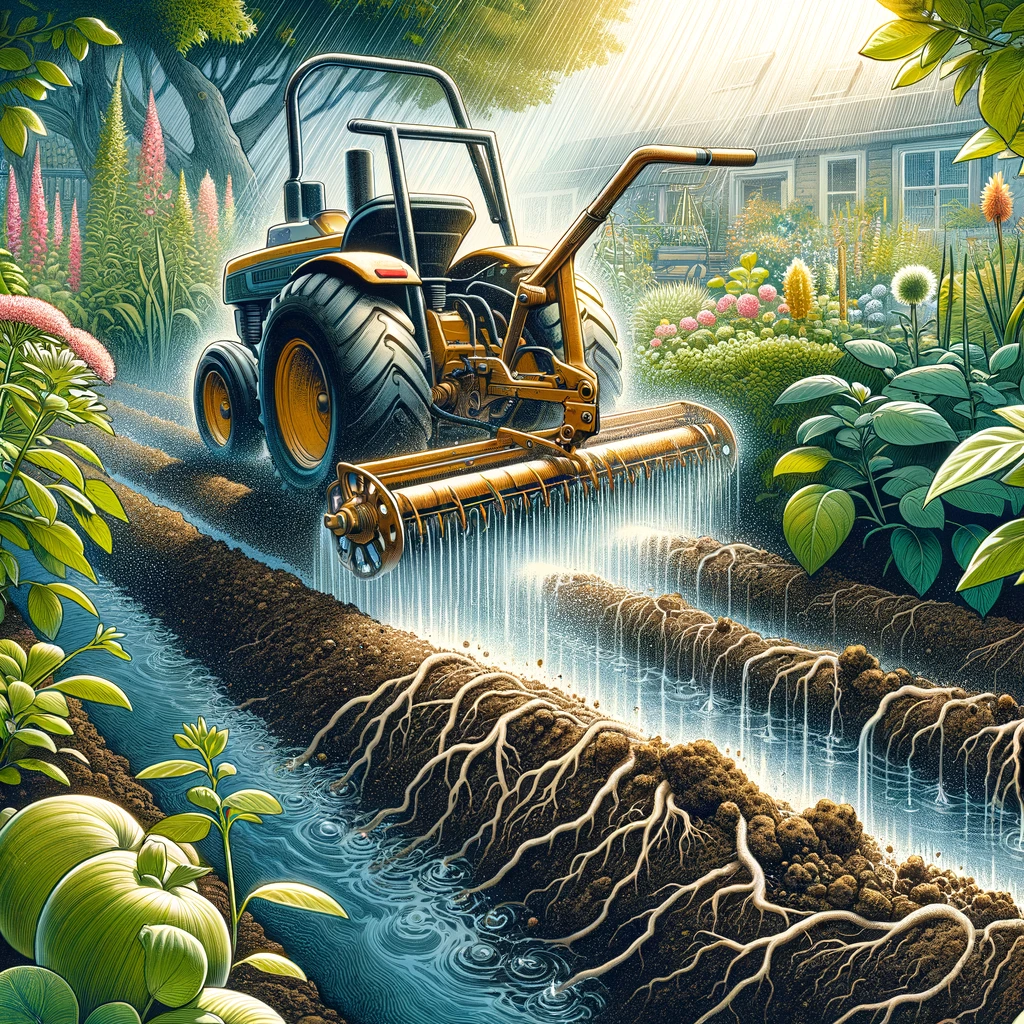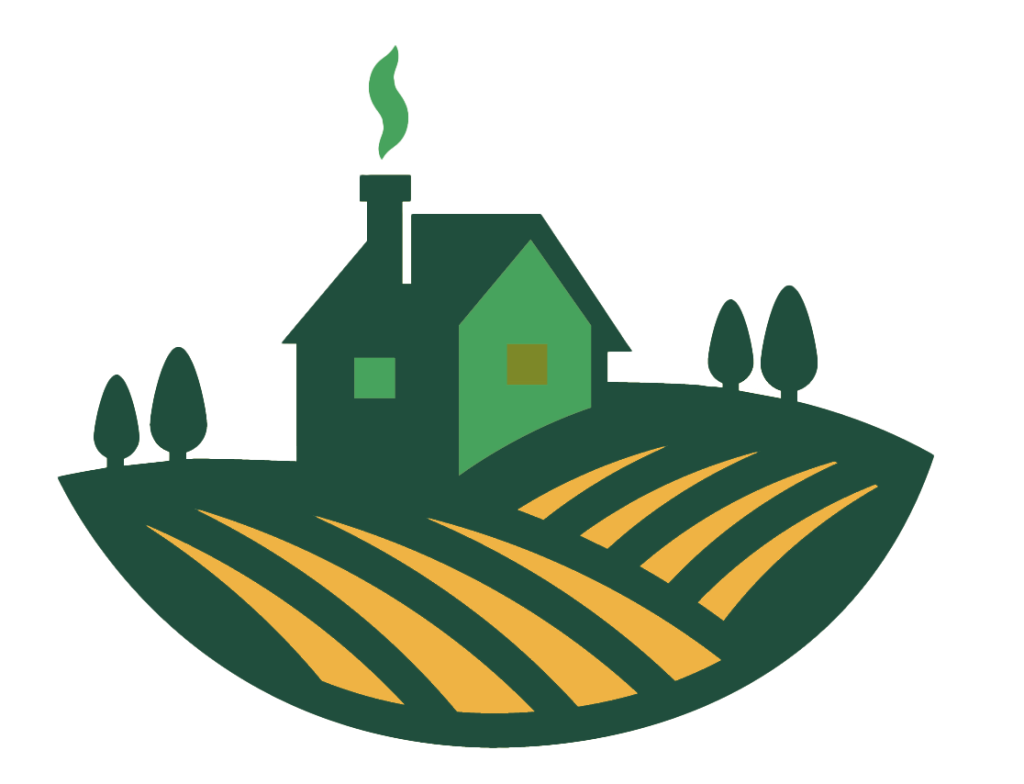
Introduction to Sustainable Soil Preparation
As an avid gardener, I am always looking for ways to maximize garden efficiency. Proper soil preparation is essential for any successful garden, yet it can be labor-intensive and time-consuming. Rotavators provide an excellent solution, offering mechanical assistance to improve soil structure and fertility.
Hiring a rotavator is extremely beneficial for urban gardeners with limited space and resources. Equipped with rotating blades, rotavators break up compacted soil, mix in amendments, and create the ideal seedbed for planting. Unlike manually turning the soil with a spade, rotavators till deeper and faster while retaining soil structure.
In this comprehensive guide, I will explore the multifaceted advantages of rotavator hire for small-scale, sustainable gardening. From their mechanical workings to environmental impact, I cover everything you need to know about leveraging rotavators to maximize garden productivity. Whether you manage a community garden or backyard vegetable patch, integrating rotavator use into your gardening calendar promotes soil health for more robust crops and reduced labor.
The Essential Role of Rotavators in Garden Efficiency
Rotavators play an invaluable role in preparing soil for planting with speed, precision and efficiency unmatched by manual techniques. As invaluable gardening equipment, they confer numerous agronomic and economic benefits.
Beyond basic soil turnover, rotavators provide specialty functions like precision depth control and attachments for specific tasks. By hiring a rotavator operator, urban gardeners gain expertise and specialized equipment without a major investment. Rotavating saves hours of grueling manual labor each season, preventing fatigue and repetitive stress injuries.
While spades and pitchforks disturb soil particles haphazardly, rotavators employ coordinated tines to fracture compacted layers while preserving the desired texture. This aerates soil for improved drainage and oxygenation while creating a crumbly seedbed ideal for direct sowing or transplanting.
Overall, rotavators are indispensable for large-scale urban plots or community gardens relying on productive seasonal planting. When soil preparation is streamlined with mechanical assistance, gardens are established quickly and require less overall maintenance.
Understanding the Mechanism of Rotavators
Rotavators operate through an elegantly simple mechanism to efficiently fracture, mix and invert soil in preparation for planting. The basic components include:
- Power Source: Usually a petrol or electric motor. Some models plug into tractor PTO systems. Determines available torque.
- Transmission: Gears linking power unit to tines. Allows speed/direction adjustments.
- Tines or Blades: Digging implements mounted on a horizontal rotor. Break up and mix soil.
- Wheels: Support frame on the surface and provide traction.
In operation, the motor spins a horizontal rotor fitted with curved tines, which fracture compacted soil layers as they rotate. Wheels propel the moving tines forward through the soil, creating a deep, inverted and aerated seedbed in a single pass.
Rotavators excel at preparing virgin or neglected ground by aggressively turning and crushing lumpy sod. But they also mix amendments into existing garden beds gently using specialty tines. This versatility suits various soil preparation needs.
Understanding the science behind how rotavators manipulate the soil empowers users to seek desired results through adjusted settings and techniques. And experienced rotavator operators have the skill set to tackle diverse landscapes.
Comparing Manual vs. Mechanical Soil Preparation
While many home gardeners still rely on hand tools for tilling beds each season, mechanical rotavators offer clear advantages in efficiency and ergonomics. Here is a brief comparison of manual vs. powered options:
<table> <tr> <td width=”50%”><h3>Manual Techniques</h3></td> <td width=”50%”><h3>Rotavator Use</h3></td> </tr> <tr> <td>
- Labor-intensive
- Slow pace
- Fatigue and injuries
- Minimal soil inversion
- Limited depth
- Minimal mixing
- Minimal weeding
</td> <td>
- Fast, easy operation
- Less physical exertion
- Good ergonomic design
- Deep, vigorous soil turnover
- Thorough mixing
- Buries surface weeds
- Broad reach
</td> </tr> </table>
While spades and digging forks certainly have their place in small garden plots, frequent heavy digging triggers fatigue, strains joints, and provokes repetitive stress injuries over time. Whereas rotavators increase digging power while reducing human effort.
For community plots or commercial urban farms, manually working dense clay or compacted soil across extensive acreage is simply not practical without supplemental mechanical assistance. Rotavators fill this gap, offering hardworking gardeners much-needed relief.
Benefits of Rotavator Use in Urban Gardens
Urban gardeners face unique challenges typically not encountered by rural counterparts, including extreme space constraints, poor soil quality, light deprivation, air pollution and limited growing seasons. Fortunately, rotavators provide tailored solutions to many issues plaguing metropolitan growers.
The benefits of incorporating rotavators in urban gardening include:
- Space Efficiency: Form raised beds, narrow rows.
- Soil Restoration: Rejuvenate damaged, compacted soil.
- Drainage Assistance: Promote aeration, and permeability.
- Weed Control: Uproot established weeds.
- Nutrient Integration: Mix balanced organic matter.
- Water Retention: Reduce runoff.
- Accessibility: Maneuver tight paths.
- Low Maintenance: Smooth topsoil minimizes weeds long term.
- Storm Resilience: Improve drainage capacity.
- Community Focus: Allow cooperative public gardening.
With thoughtful design and purposeful soil preparation, small urban plots can yield bumper crops thanks to rotavators effectively harnessing limited growing space.
Step-by-Step Guide to Hiring a Rotavator
While purchasing a rotavator may suit commercial farmers or expansive rural gardens, urban growers on a budget usually find it more practical to hire rotavator services as needed. Here is a simple guide:
Step 1: Determine size garden area and situation (clearing new plots, renovating existing beds, improving drainage, blending amendments, etc.).
Step 2: Research local tool hire companies and rotavator specifications. Select horsepower rating to match needs.
Step 3: Call ahead to ask questions and reserve a rental unit for the required time slots. Arrange delivery if possible.
Step 4: Clear and mark the intended soil preparation area, removing debris that could damage equipment.
Step 5: Perform a site risk assessment and prepare safety gear for the operator.
Step 6: Brief operator on the desired outcome and specific challenges. Provide a gardening map if available.
Step 7: Allow the operator to rotavate area. Offer to assist with maneuvering if needed in tight spaces.
Step 8: Visually inspect freshly tilled garden beds, ensuring adequate turnover and satisfactory aeration.
Step 9: Provide operator feedback on experience. Take notes on settings/attachments for future reference.
Step 10: Smooth beds, shape raised rows, establish paths/dividers as needed. Plant garden!
With this simple guide to facilitate the process, rotavator rental allows urban growers to leverage powerful equipment otherwise inaccessible. And after witnessing the dramatic soil transformation firsthand when rotavating a garden bed, most urban farmers become committed converts!
Soil Health: The Key to a Thriving Garden
The foundation underlying every successful garden is living soil. This dynamic, fertile medium allows gardeners to sustainably cultivate nutritious plants without relying heavily on synthetic fertilizers and pesticides. Only thriving soil ecosystems reliably confer resilience against pests and extreme weather while supporting robust vegetable growth.
Yet the baseline quality of urban soils is generally poor, typically featuring:
- Compaction: From construction, traffic, and loss of organic matter.
- Contamination: Pollutants from industrial practices and leaded gasoline.
- Nutrient Imbalance: Lack of organic matter reduces cation exchange capacity.
- Hydrophobicity: Materials like concrete dust increase water repellency.
- Erosion Issues: Without ground cover, topsoil erodes.
When establishing new garden beds, restoring derelict soil or renovating landscape beds, the first step is rebuilding a healthy medium for plant roots to infiltrate. This allows access to air, water and nutrients deep underground.
Rotavators play a profound role from the start by addressing common urban soil problems through mechanical intervention to improve texture, structure and depth for restored productivity.
How Rotavators Enhance Soil Aeration
Proper soil aeration promotes drainage and gas exchange between the atmosphere and soil organisms like plant roots, microbes and fungi. Good porosity with structural stability prevents waterlogging while ensuring adequate air circulation.
Common in urban areas, excessive soil compaction impedes growth by limiting oxygen to plant roots and soil life. It also reduces permeability, impeding drainage and water retention while amplifying erosion and runoff issues. Plants struggle to develop robust root systems in compressed earth, resulting in weaker, less productive growth.
Rotavators fracturing dense layers solve this widespread problem. As rotating tines bore through soil, they create millions of tiny air pockets and channels for improved circulation. Aerating and loosening top layers eases compaction to:
- Restore living space for essential soil microbes.
- Promote stronger root development at depth.
- Allow movement of water, gases and heat into soil profile.
- Increase responsiveness to rain and irrigation.
- Reduce erosion by improving infiltration rates.
So while stable soil structure resists compressing back down after rotavating, remember to minimize foot traffic across freshly worked beds to preserve delicate aggregates longest.
The Impact of Rotavators on Soil Fertility
Beyond physical characteristics like crumbly texture welded by organic glues, soil fertility involves right-touching biological and chemical factors enabling plants to flourish. This includes a balanced living ecosystem of microbes, the presence of plant-available nutrients, and soil chemistry allowing nutrient exchange.
Rotavators tangibly impact fertility on multiple fronts:
- Organic Matter Integration: Mixing compost, manures and other nutrients promotes microbial life.
- Mineralization Surge: Tine friction and soil heating by rotavators release a flush of available nitrogen, phosphorous and trace elements locked in organic matter and soil particles.
- Cation Exchange Capacity: Breaking up clay particles increases their surface area able to hold positively charged nutrient ions.
- pH Adjustment: Adding lime raises pH to remedy acidity during bed preparation.
Working amendments into the topsoil layers where plants concentrate their roots optimizes access to nutrients. And rotavators mix and distribute materials evenly throughout the soil profile with no shady spots deprived of organic matter.
Choosing the Right Rotavator for Your Garden
With power ratings ranging from small electric tillers to PTO-driven professional models, rotavators are produced in a spectrum suited to various garden sizes and site conditions. Consider key factors when selecting an appropriate hire unit:
Power Type
- Petrol – More torque for heavy soil preparation. But higher emissions.
- Electric – Quieter, cleaner. Battery-powered options allow cordless mobility. Lower torque rating.
- Tractor Mount – Hydraulic PTO-drive models offer high power. Require a tractor.
Power Rating
- Light Duty: 10-30 cm wide tines – Gardens under 200 m2
- Medium Duty: 35-50 cm working width – Gardens around 500 m2
- Heavy Duty: 60 cm+ tines – Parks, farms, orchards, vineyards
Soil Type
- Clay – Requires heavy duty with deep reach.
- Loam – Choose medium-rated models.
- Sand – Light electric tillers work well.
Matching the right specifications and features to your garden size, soil type and tasks ensures efficiency. Exceeding horsepower needs to waste effort and money, while underpowered units disappoint by failing to achieve desired soil preparation goals.
Cost-Benefit Analysis: Renting vs. Buying Rotavators
Urban farmers balancing potential costs against long- and short-term benefits should consider key factors influencing the rent versus buy decision for adding rotavators to their gardening toolkit:
Cost
- Rentals offer affordable access without major investment, but fees add up over the years for regular users.
- Purchasing equipment requires significant upfront expenditure but pays off through continual reuse.
Convenience
- Delivery services provide easy access for infrequent rotavator needs.
- Owning onsite equipment ensures access whenever the need arises without depending on others.
Skill
- Let experienced operators handle tricky terrain while you gain experience.
- With your own machine, practice builds confidence operating it over familiar ground.
Overall, renting suits small plots rotavated a few days annually. Larger or collective gardens benefit from owning equipment and learning techniques to promote self-sufficiency. Consider cooperating with neighbors to share higher-end machinery purchases when possible.
Safety Tips for Using Rotavators
When properly handled with common sense precautions, rotavators present low risk beyond predictable digging hazards. Nonetheless, these powerful machines with sharp, rapidly spinning parts deserve utmost care and attention to avoid accidents. Safety tips include:
- Thoroughly survey the area first to remove debris that could damage equipment or cause kickback.
- Ensure correct engine or electric switch operation before engaging tines.
- Refrain from wearing loose pants or clothing that could catch.
- Use ear and eye protection against flying soil debris.
- Maintain a firm, balanced stance and control of the machine.
- Exercise extreme caution on slopes, not sideways.
- Avoid spinning tines while stationary to prevent soil damage or machine tipping from torque reaction.
- Disengage tines before crossing hard surfaces.
- Allow equipment to fully stop before transport, storage or maintenance.
Simple diligence goes a long way toward preventing personal harm or damage when operating powerful rotavators. Well-maintained equipment with safety features and conscientious handling upholds a strong track record for safe, effective performance.
The Environmental Advantages of Using Rotavators
While industrial farming relies heavily on deep plowing, control chemicals and excessive fertilizer inputs, sustainable urban gardeners minimize external inputs through ecological soil stewardship techniques. Rotavators serve as valuable transitional tools in this process.
Though using internal combustion engines increases fossil fuel consumption, rotavators offer meaningful environmental benefits over traditional tractor plowing:
- Reduced Carbon Emissions: Lightweight tiller models maximize efficiency.
- Low Soil Disturbance: Shallow working depth retains structure.
- Sharp Tines Cut Cleanly: Leaving direct drill seeding residues to self-mulch.
- Mulch Integration: Mix surface organics into topsoil.
- Organic Practices: Facilitate holistic soil fertility methods without chemicals.
- Companion Planting: Quickly prepare intricate garden plans.
- Water Conservation: Reduce loss through runoff and evaporation.
While manual techniques excel for small spaces, efficiency demands mechanical assistance on larger scales. Well-utilized urban rotavators help ease the transitional process toward regenerative, low-impact cultivation methods through appropriate technology.
Seasonal Considerations for Rotavator Use
The ideal window for rotavating garden beds spans early spring through mid-autumn when soil possesses the right balance of moisture, warmth and biological activity to respond well. Here is a monthly guide for seasonal optimization:
Spring
- March-April: Soil still cold. Wait for frost to thaw.
- May: Warming soil becomes workable. Prime rotavating season!
Summer
- June: Excellent rotavating conditions persist.
- July: Hot, dry weather. Irrigate soil before working.
- August: Reduce turning depth to protect soil life.
Fall
- September-October: Re-rotavate empty beds. Also ideal for new gardens!
- November: Finish season preparations before winter sets in.
While summer heat helps fracture compacted layers, excessively dry conditions threaten soil health and structure. Timely irrigation pre-rotavating prevents this, enabling vigorous working. And concentrating efforts toward fall offers cooler weather more conducive for rotavating marginal ground.
Preparing Your Garden Layout with a Rotavator
Rotavators excel at quickly restructuring soil across plots undergoing a wholesale transformation like new garden installs, overgrown restoration jobs or redesigning outdated landscape plantings.
Several steps leverage rotavators in transitioning raw land into an orderly garden layout:
- Mow, clear and level area.
- Stake perimeter beds, paths and planting zones.
- Spread thick mulch or cardboard over grassy areas left intact.
- Rotavate main beds to desired depth, leaving space for soil amendments.
- Install edging materials between beds and grass strips.
- Fill beds with imported planting mix blended with compost.
- Shape out planting rows, hills and grids before raking smooth.
With the above basic framework established through rotavator preparation and supplementing soil fertility, the garden successfully transitions from concept to reality!
The Role of Rotavators in Organic Gardening
The principles underlying organic gardening extend beyond simply avoiding synthetic chemicals to encompass responsible stewardship nurturing soil health and environmental balance. By supporting natural ecological cycles, organic practices continually boost soil fertility to strengthen plants against pests and disease while eliminating pollution from fertilizer and pesticide runoff.
Rotavators serve as useful modern transitions from historical manual techniques to regenerative mechanization integrating organic principles, including:




